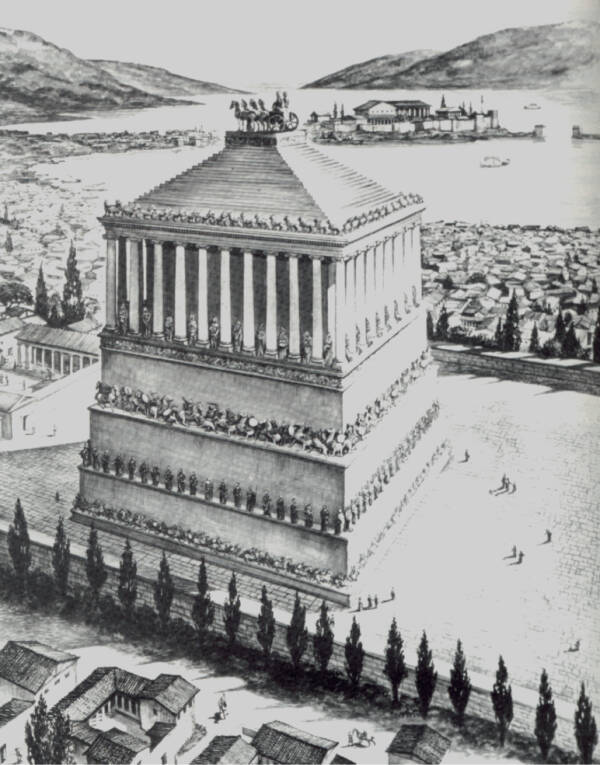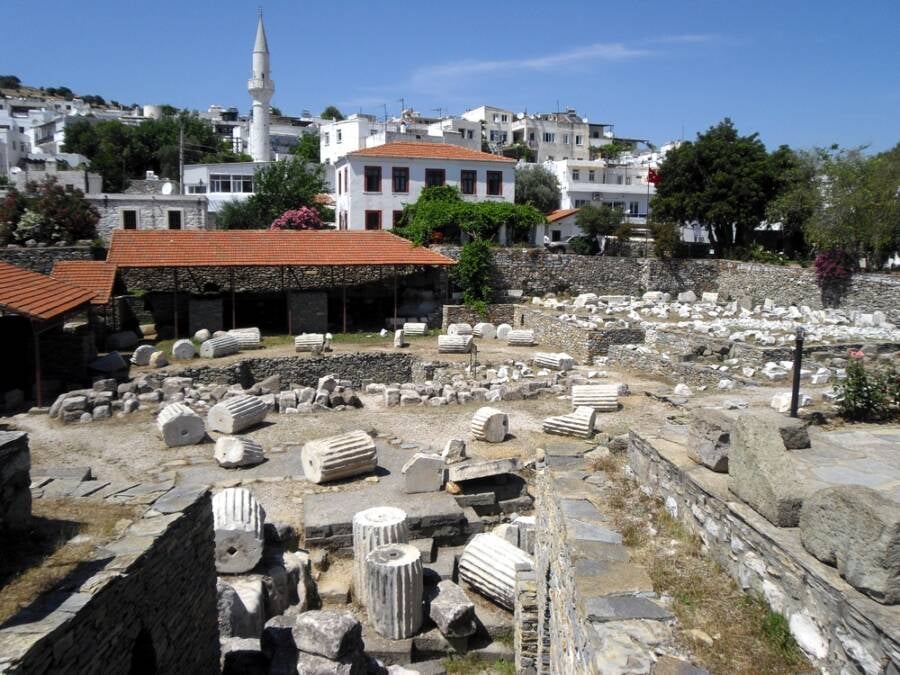The Seven Wonders Of The Ancient World: The Mausoleum Of Halicarnassus In Turkey

ImgurA depiction of the Mausoleum at Halicarnassus, which was destroyed by earthquakes.
The tomb of Mausolus in Halicarnassus was a monument of such astonishing beauty that its occupant’s name became synonymous with any above-ground structure designed to house the dead: the mausoleum.
Located in present-day Bodrum, the Mausoleum of Halicarnassus was built around 350 BCE to house the body of the Persian satrap Mausolus.
By the time of his death, Mausolus and his sister-wife Artemisia had already spent a fortune erecting a number of beautiful marble statues and buildings in the Greek style all over Halicarnassus — and Mausolus had decided that his tomb would be no exception.

Public DomainAnother depiction of the lost Mausoleum.
He had already planned it all out by the time of his death, and he left Artemisia to oversee the construction.
She threw her fortune into the work, collecting the best materials and the most talented craftsmen, including the famous Scopas, the architect who had overseen the final and most fantastic renovation of the Temple of Artemis at Ephesus.
Such a monumental undertaking was not a quick project, and Artemisia died just two years into the construction. Her ashes were placed in an urn beside her husband’s in the unfinished marble hall, and the builders continued to work around them.
The finished product was marvelous; it wasn’t the largest building in the ancient world, though its walls were a staggering 148 feet high, and its position on a scenic hilltop meant it towered over the surrounding landscape.
But what most impressed the ancients about the mausoleum was the artistry of its design and its lifelike statuary. Life-size lions prowled, famous historical figures gestured, horses galloped before chariots, and animals of all kinds peered from its walls and roof.
It was these decorations that left the ancients in no doubt that the mausoleum belonged among the Seven Wonders of the Ancient World.

FollowingHadrian/Wikimedia CommonsToday, only ruins of the mausoleum remain.
The historical record doesn’t tell us how the mausoleum met its end. In 1402, when the Knights of St. John of Jerusalem invaded the region, they found it in shambles, perhaps destroyed by earthquakes.
They used the stones of the mausoleum to fortify their nearby stronghold, the castle at Bodrum. By 1522, almost every block of the mausoleum had been disassembled.
Today, the crusader castle still stands, and the stones of the mausoleum are visible in its walls.

bazylek100/FlickrAnother angle of the mausoleum ruins.





